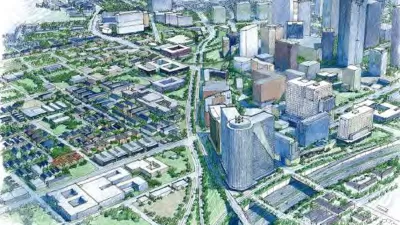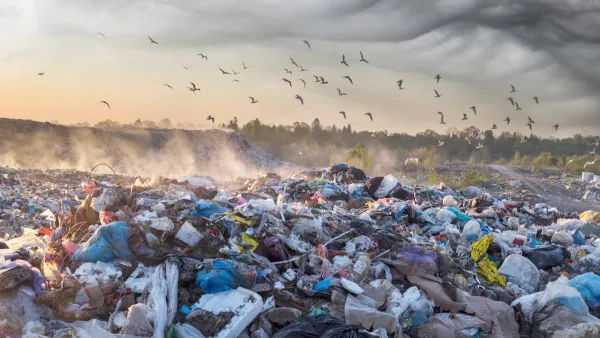Ben Welle discusses the benefits of freeway removal programs both at home and abroad, and explores what cities have done to fill the void they leave behind.
As cities across the globe confront the question of how to serve a growing population, the outright demolition of existing freeways seems a counterintuitive, backward step. But a report released last month demonstrates otherwise, highlighting freeway removal projects in five major cities (Portland, San Francisco, Milwaukee, Seoul, and Bogotá). Published by sustainable transportation groups EMBARQ and the Institute for Transportation and Development Policy, the report underscores the benefits that freeway removal confers to the public – provided something is done to compensate for the lost infrastructure.
"Freeway removal is really about shifting priorities from moving cars to moving people," Welle writes, pointing to improvements in public health. When Portland did away with the Harbor Drive Expressway, for example, it restored public access to the adjoining Willamette River with the creation of the Tom McCall Waterfront Park. "The park now has roughly 1.6 million users per year, with people running, biking, walking their dogs, playing Frisbee, and attending major events and the park's Saturday market."
By replacing freeways with green space, cities can also mitigate heat islands and improve air quality. The elimination of the Cheonggyecheon Expressway in Seoul "led to a reduction of the heat island effect by as much as 8 degrees Celsius, according to summertime measurements in comparison to nearby paved roadway conditions," while the concentration of certain nearby air pollutants fell by as much as one-fifth.
But in order for freeway removal to work, cities must implement measures to restore the capacity of the transportation network. Officials in Seoul did so by beefing up the reach and efficiency of transit, expanding bus-only lanes and better integrating bus and subway service. Notably, as transit service improved, traffic accidents fell by one-third. "The number of vehicles passing through downtown decreased 9 percent after a bus rapid transit (BRT) system and aggressive Transportation Demand Management (TDM) measures were implemented as part of the project," Welle adds.
FULL STORY: Freeway Removal Creates Opportunity for Improved Health, Quality of Life

Planetizen Federal Action Tracker
A weekly monitor of how Trump’s orders and actions are impacting planners and planning in America.

Maui's Vacation Rental Debate Turns Ugly
Verbal attacks, misinformation campaigns and fistfights plague a high-stakes debate to convert thousands of vacation rentals into long-term housing.

San Francisco Suspends Traffic Calming Amidst Record Deaths
Citing “a challenging fiscal landscape,” the city will cease the program on the heels of 42 traffic deaths, including 24 pedestrians.

Amtrak Rolls Out New Orleans to Alabama “Mardi Gras” Train
The new service will operate morning and evening departures between Mobile and New Orleans.

The Subversive Car-Free Guide to Trump's Great American Road Trip
Car-free ways to access Chicagoland’s best tourist attractions.

San Antonio and Austin are Fusing Into one Massive Megaregion
The region spanning the two central Texas cities is growing fast, posing challenges for local infrastructure and water supplies.
Urban Design for Planners 1: Software Tools
This six-course series explores essential urban design concepts using open source software and equips planners with the tools they need to participate fully in the urban design process.
Planning for Universal Design
Learn the tools for implementing Universal Design in planning regulations.
Heyer Gruel & Associates PA
JM Goldson LLC
Custer County Colorado
City of Camden Redevelopment Agency
City of Astoria
Transportation Research & Education Center (TREC) at Portland State University
Jefferson Parish Government
Camden Redevelopment Agency
City of Claremont





























